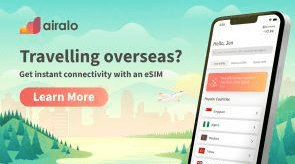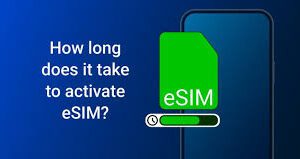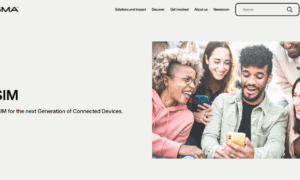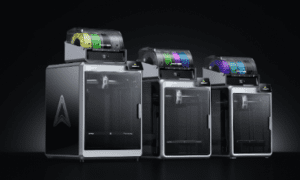In today’s hyperconnected world, staying online while traveling isn’t a luxury—it’s a necessity. Whether you’re navigating unfamiliar streets, booking last-minute accommodations, or simply checking in with loved ones back home, reliable internet access shapes your entire travel experience. Yet most travelers still resort to international roaming plans that drain your wallet before you even unpack your suitcase. The moment you land in a new country and turn on cellular data, your carrier hits you with charges that feel disproportionate to the actual service being delivered. But there’s a smarter way to stay connected—and it’s already in your pocket.
The Hidden Cost of International Roaming
Let’s face it: international roaming is expensive. Really expensive. A typical vacation abroad can quickly become financially painful if you’re relying on your home carrier’s roaming services. Many travelers don’t discover the full extent of these costs until they receive their phone bill weeks after returning home—a painful surprise that no vacation memory is worth.
The reason roaming costs so much isn’t complicated: your home carrier negotiates rates with foreign operators and then marks them up significantly to maintain profit margins. On top of that, carriers charge administrative overhead fees for managing these international partnerships. The result? You’re paying premium prices while having zero alternatives since you’re already abroad and committed. Pay-per-use data rates are even worse in many destinations, meaning casual browsing could become surprisingly expensive.
Beyond the direct financial hit, there’s another problem: data throttling. Many carriers offer daily passes or limited data allowances that seem reasonable initially, but once you hit a certain threshold, your connection slows dramatically. Suddenly, loading a single map or Instagram photo takes forever, and your ability to communicate effectively vanishes.
Why Staying Connected Actually Matters
Before exploring solutions, it’s important to understand why connectivity is so critical for modern travelers. In today’s travel landscape, nearly everything depends on reliable internet access: boarding passes, hotel check-ins, ride-share apps, digital payments, GPS navigation, and emergency communication. Losing internet access, even briefly, doesn’t just slow you down—it creates legitimate concerns and limits access to critical information.
Safety First: Being connected allows you to receive real-time alerts, travel advisories, and emergency notifications. In areas experiencing weather events or other disruptions, connectivity is genuinely indispensable for receiving safety information or knowing when to adjust your plans. Additionally, you can reach emergency services if needed, and your family can contact you in case of urgent matters back home.
Navigation and Logistics: Without reliable data, you become dependent on Wi-Fi—which isn’t always available where you actually need it. Imagine arriving at an airport late at night in a city where you don’t speak the language, and there’s no available Wi-Fi. With cellular data, you can instantly find transportation to your accommodation, check current transit options, and avoid situations that prey on confused travelers. Mobile apps and online maps transform disorienting new cities into navigable spaces where you can move with confidence.
Work and Productivity: Digital nomads, business travelers, and remote workers can’t afford to be offline. Missing important emails, work calls, or client communications because you’re traveling can damage your professional reputation and income. Reliable internet keeps you productive and reachable regardless of your location.
Social Connection: Beyond logistics, staying connected helps you maintain relationships with loved ones and overcome travel loneliness. Regular check-ins with family and friends reduce travel anxiety and enhance your overall experience. In today’s travel landscape, connection isn’t optional—it’s fundamental.
The Traditional Solutions and Their Shortcomings
Before exploring eSIMs, let’s examine the conventional approaches travelers typically consider:
Local SIM Cards: When you arrive at a destination and purchase a local SIM card, you can access domestic rates. This works well if you’re staying in one country for an extended period and have time to visit a mobile store. The problems? You need an unlocked phone, you’ll have a temporary number that complicates staying reachable, and switching carriers at every border becomes exhausting for multi-country trips. Plus, you risk overpaying if you don’t understand the local language or carrier pricing structures.
International Roaming Plans: Your existing carrier offers these, which sounds convenient—no new SIM card needed. But as we discussed, the costs are astronomical and the service often disappoints. You’re locked into whatever speeds and limitations your carrier imposes.
Messaging Apps Over Wi-Fi: WhatsApp, Viber, and similar apps offer free calling and messaging when connected to Wi-Fi. The limitation? This only works when you have access to a strong Wi-Fi signal, and you can’t make or receive calls from people without the same app. It’s a partial solution at best, leaving gaps in your connectivity.
Pocket Wi-Fi Devices: These portable hotspots allow you to share one internet connection across multiple devices. The catch? You’re carrying an extra device that needs charging, and costs can add up quickly for longer trips, especially if you’re traveling to multiple countries. You’re essentially solving one problem while creating others.
Meet the Game-Changer: eSIM Technology
So what’s the solution that’s changing how travelers stay connected? It’s called an eSIM—short for embedded SIM—and it represents a fundamental shift in how international connectivity works.
Here’s how it works: Instead of inserting a physical SIM card, an eSIM is a small digital chip already built into your phone’s hardware. Rather than visiting a store and waiting in lines, you simply purchase a digital plan through an app, scan a QR code, and your phone instantly connects to local networks at your destination. It’s that simple—no hardware to swap, no setup complexity, just immediate, seamless connectivity.
The beauty of eSIMs is their flexibility. You can store multiple profiles on a single device and switch between them easily. Traveling to several countries? Download different plans for each and activate them as you arrive at each destination. Your original SIM card stays active in the background, so you can keep receiving calls and texts from home (though they might incur additional charges unless you disable data roaming completely).
Most importantly, eSIMs connect you directly to local mobile networks without the wholesale markup that makes traditional roaming so expensive. You’re paying local rates, not international roaming rates. For most trips, this difference translates to significant savings—the exact amount depends on your destination and usage patterns.
How eSIMs Compare to Traditional Solutions
Let’s compare the major connectivity options available to travelers:
| Solution | Cost Level | Setup Time | Coverage | Flexibility |
| Traditional Roaming | Very High | Automatic but slow | Varies by carrier | Limited options |
| Local SIM Card | Moderate | Time-consuming | Excellent locally | Only works in one country |
| eSIM (Single Country) | Low to Moderate | Quick | Excellent locally | Works globally when needed |
| eSIM (Global Plans) | Moderate | Quick | Good across regions | Seamless across multiple borders |
The cost difference alone makes eSIMs compelling. But there’s more: This setup is remarkably fast compared to the significant time needed to find and visit a mobile store, interact in a language you might not speak, and sort through confusing pricing options.
Real-World Experience: What Travelers Report
You might be wondering if eSIMs actually live up to the hype. Real travelers report largely positive experiences. One traveler used across multiple European countries for an extended road trip. They loved the ease of getting data immediately upon arrival and reported that it was “by far the easiest choice” compared to their previous practice of buying local SIM cards.
Another traveler used an eSIM provider in different regions and was impressed by how fast everything was and appreciated the simple in-app activation process. In their subsequent trips using the service across various countries, they found the same easy installation and reliable performance.
That said, some users report quirks worth knowing about. In some countries, travelers connected at standard speeds rather than premium speeds, which was suitable for maps and basic apps but not ideal for streaming. Others noted that the eSIM connected through certain carriers but the app showed a different operator in the background, which occasionally confused location-based services. These are minor issues for most travelers, but if you need true local phone numbers for certain services, you should verify that your specific eSIM plan includes calling and texting capabilities.
Practical Tips for Using eSIMs Effectively
Ready to embrace eSIM technology for your next trip? Here’s how to maximize your experience:
Check Device Compatibility First: Not every phone supports eSIM yet. Most modern flagship devices support it, but older models don’t. Before purchasing, verify that your specific phone model is compatible. You can usually find this information in your phone settings or on the provider’s website.
Purchase Before You Travel: While you can purchase eSIMs after arriving at your destination (if you have Wi-Fi access), buying before you leave home is smarter. This ensures you have connectivity immediately upon landing, which is critical if you need to contact your hotel, arrange transportation, or navigate from the airport. Most providers offer plans that can be purchased online and activated remotely.
Choose the Right Plan Type: eSIM providers offer various options—country-specific plans, regional plans, and global plans. For single-destination trips, country-specific plans are typically more economical. For multi-country tours, regional or global plans eliminate the hassle of purchasing new ones constantly. Be realistic about your data needs and usage patterns, and choose accordingly.
Keep Your Original SIM: Most phones support dual SIM operation, meaning you can keep your original SIM active alongside your eSIM. This is valuable because it allows your home contacts to reach you through your regular number. It also means you maintain authentication methods for banking and other important accounts that use your home number.
Download Maps Offline: Even with reliable data, it’s smart to download offline maps for your destination. This serves as a backup if you experience temporary connectivity issues and helps preserve battery life by reducing data usage.
Use a VPN on Public Wi-Fi: While eSIMs provide excellent coverage for cellular data, you’ll likely still use Wi-Fi at hotels and cafes. Always use a VPN when connecting to public Wi-Fi to protect your personal information. This is a non-negotiable security practice for protecting your data.
Understanding the Trade-offs
While eSIMs are clearly superior to traditional roaming for most travelers, they’re not perfect for every situation. Understanding the limitations helps you make an informed decision:
Phone Number Considerations: Not all eSIM plans include a local phone number—many are data-only. If you need to make calls, receive SMS, or set up two-factor authentication using a phone number, verify that your plan includes these features before purchasing. Some providers offer plans with calling and texting capabilities, though these typically cost more than data-only options.
Network Quality Varies: While eSIMs connect to local networks, the actual service quality depends on those networks’ infrastructure. In regions with less developed infrastructure, it won’t magically improve things. The upside? You’re no longer stuck with your home carrier’s roaming partner—you can choose providers known for strong coverage in your destination.
Limited Support in Some Regions: Certain countries have restrictions on eSIMs or underdeveloped support infrastructure. Before traveling to less-developed regions or countries with limited technology adoption, verify that providers have coverage there.
Managing Multiple Plans for Multi-Country Trips: If you’re visiting numerous destinations within a short period, you might end up managing multiple eSIMs. While this is still economical compared to roaming, it requires more active management than a single global plan.
The Verdict: Why Smart Travelers Choose eSIMs
After comparing all available options, the advantages of eSIMs become clear. They’re significantly cheaper than roaming, faster to set up than local SIM cards, more flexible than international roaming, and don’t require carrying additional devices. For the vast majority of modern travelers—whether you’re a business traveler, digital nomad, or leisure tourist— represents the smartest way to stay connected abroad.
Beyond the practical benefits, align with how modern travel actually works. Today’s traveler doesn’t want complexity; you want simplicity, reliability, and predictability. You want to land in a new city with data already working, not scramble to find a mobile store in an unfamiliar language. delivers exactly that.
Take Action Today
Your next trip doesn’t need to start with connectivity stress or financial surprises. Download an eSIM provider app, research plans for your destination, and purchase your plan before you travel. In just a few minutes, you’ll have worldwide connectivity at your fingertips. Your future self—relaxed, connected, and financially secure—will thank you for making this simple decision today.
The world is waiting to be explored. Don’t let connectivity concerns hold you back. Embrace eSIM technology and travel smarter.



































